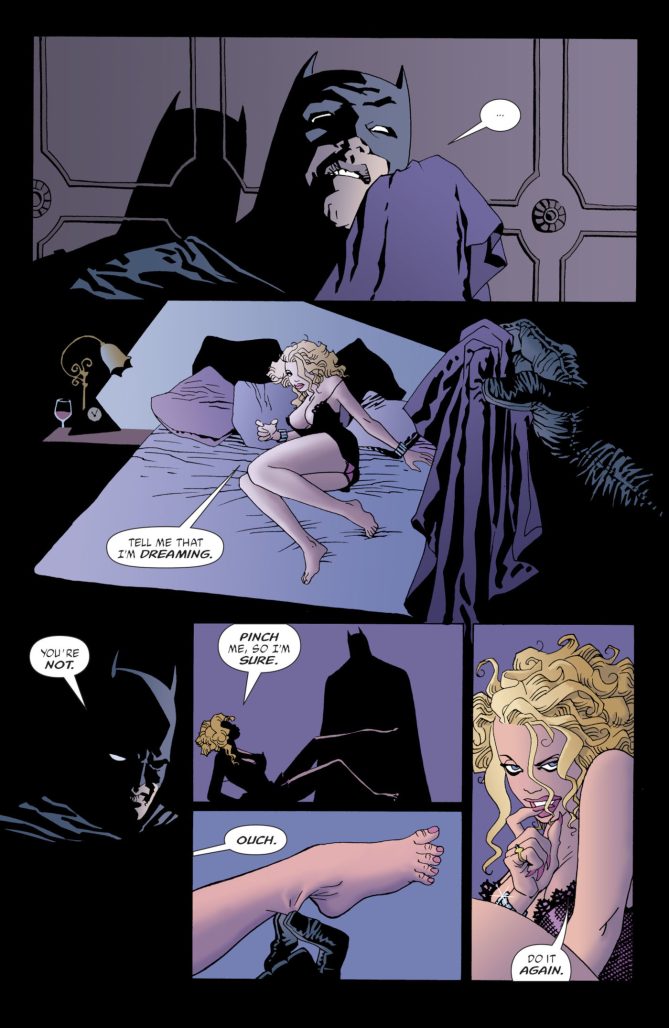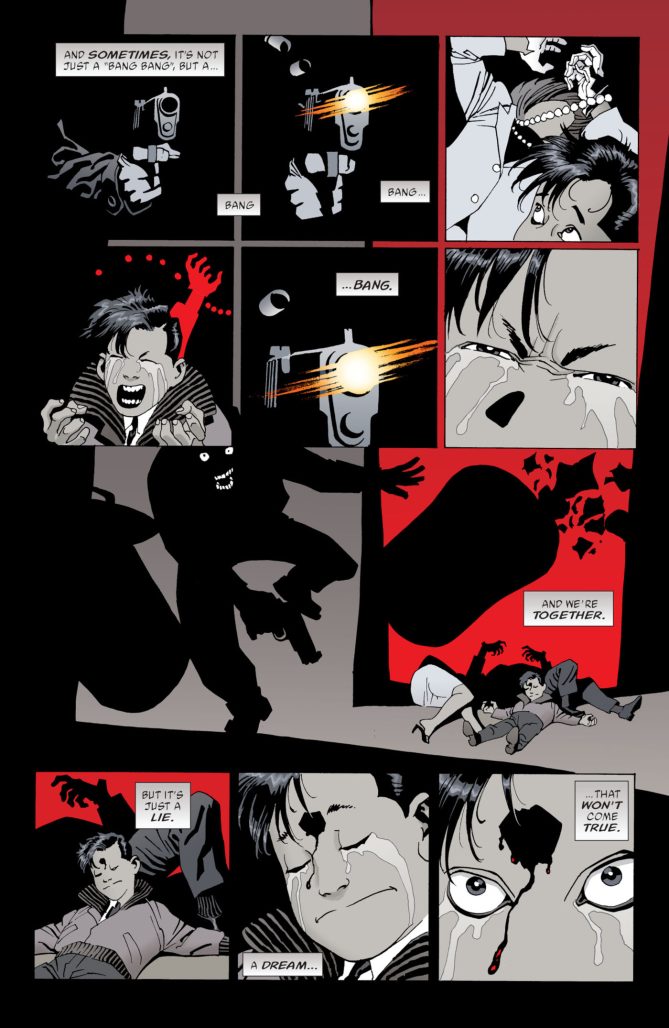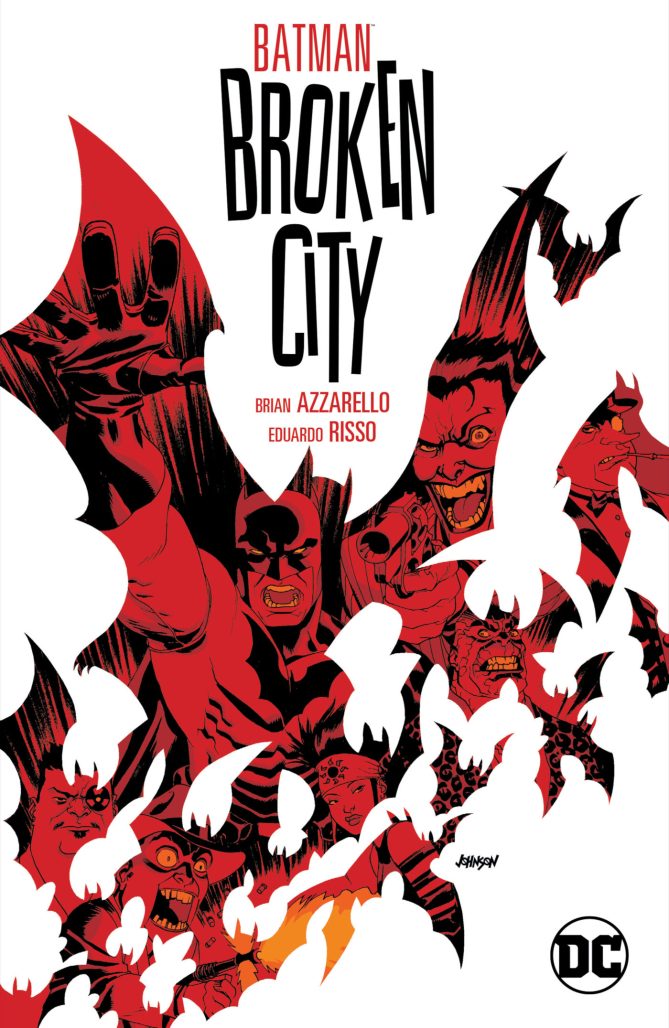When you think about noir-tinged Batman stories, you’re not exactly for want of examples.
Batman is one of those superheroes that exemplified the outgrowth from the pulp era, with crime and mystery genre elements baked in to his origin and setting. Tragic murders. Corrupt cops. A proliferation of organized crime. The occasional impossible romance. Many of the pieces of noir stories are present throughout the decades. But there are some names that probably come to the forefront.
You probably think of Frank Miller and David Mazzucchelli’s Batman: Year One first. A story that basically set the standard for the following generations’ worth of takes on the character. Inspiring many later stories including one of the darkest, told by the 100 Bullets team, that originally appeared Batman #620 through 625.
“No place in Heaven for me or Gotham City…”
Batman – Broken City by Brian Azzarello, Eduardo Risso, Patricia Mulvihill, and Clem Robins is an oppressive, bleak beast. A story where hope goes to die. It was kind of amazing to see it in the main Batman title, in continuity. It starts out simple enough, with a murder and an initial suspect in Killer Croc, but it expands further into the hunt for a sleazy bit player, an unhinged Batman mobilizing both sides of the law through intimidation and violence, a femme fatale, and a pair of later murders that mirror Bruce’s own parents in what he thinks is collateral damage.
Brian Azzarello’s voice for Batman is interesting. While it’s full of the hard-boiled metaphors and turns of phrase that come with the genre, it reminds me most of Gordon’s narration from Year One. Albeit in a somewhat inverted fashion. You’ve got Gordon waxing philosophical about Hell, Batman initially thinking about Heaven. But the thought patterns echo, implying a bit that Batman has become a bit more cynical from his earlier days. And gives Clem Robins a challenge for the narration boxes.
What I find even more intriguing is, that despite clearly being influence and inspired by Miller—there are the obvious nods to Year One and The Dark Knight Returns, but the introduction of the femme fatale and how it plays out with the main suspect shares some similarities to bits throughout Sin City—this is where I actually see the most influence of José Muñoz on Eduardo Risso’s artwork. Many of the characters definitely feel inspired by Miller, Little Boy in particular and Batman’s injuries too, but many of the shapes, shadows, and angles feel like Muñoz to me. It looks great.
Patricia Mulvihill’s colours really enhance the tone and atmosphere of the story. Dark blues and greys throughout the main narrative, with more expressionistic washes of colour against black and white for the flashbacks and dream sequences. Gorgeous work.
“So maybe everyone’s guilty. Maybe that was how this was supposed to end. A nasty package, wrapped with a cynical bow.”
I do, however, need to make it clear that while there are definitely tributes to Miller and Mazzucchelli’s work throughout the arc, it still wholly stands on its own. You don’t need to have read anything beforehand. Just expect a tale that’s going to crush your heart. Stomp on it a few times. Chew it up. Douse it in oil. And then sew you back up.
Azzarello, Risso, Mulvihill, and Robins manage to craft a tale in Batman – Broken City that will leave you wondering if existence in Gotham City could possibly get any bleaker. Like many a good noir tale, it will have you questioning morality, if anyone is truly good, and if there is any real justice in this kind of town. It’s not a squeaky clean Batman and the story is all the better for it.
Classic Comic Compendium: BATMAN – BROKEN CITY
Batman: Broken City
Writer: Brian Azzarello
Artist: Eduardo Risso
Colourists: Patricia Mulvihill
Letterer: Clem Robins
Publisher: DC Comics
Release Date: October 22 2003 – March 31 2004 (original issues)
Available collected in Batman by Brian Azzarello and Eduardo Risso and Batman: Broken City
Read past entries in the Classic Comic Compendium!



